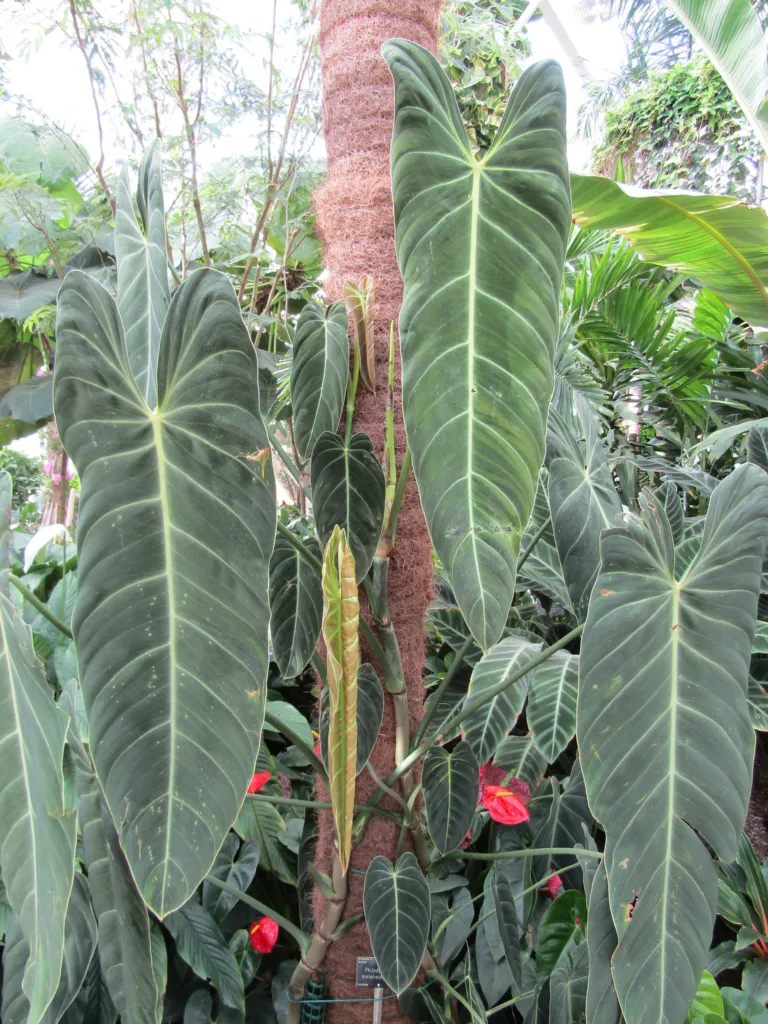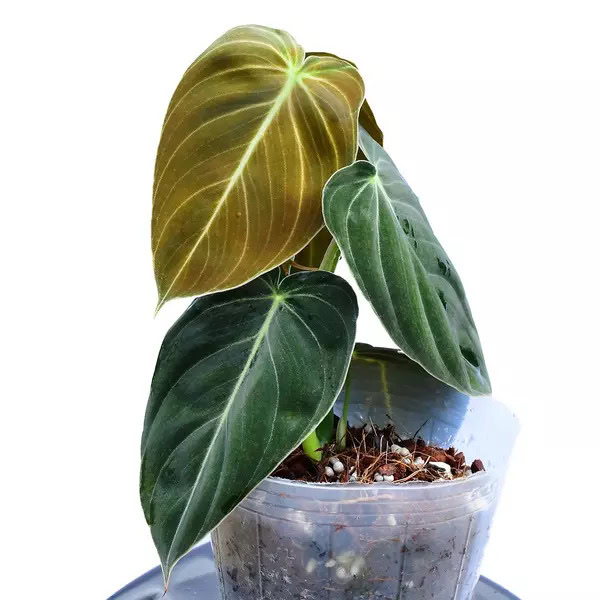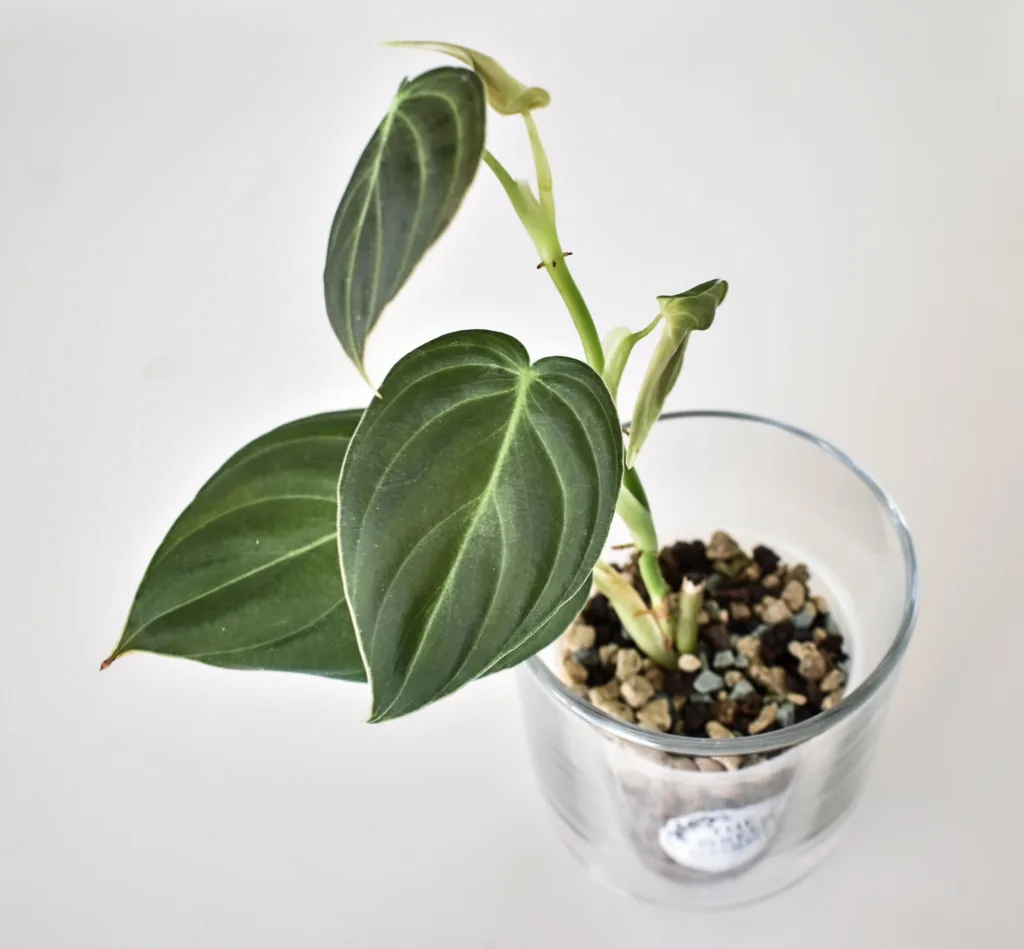Philodendron Melanochrysum is a stunning tropical plant that has gained popularity among indoor gardening enthusiasts.
Its large, velvety leaves and unique coloration make it a prized addition to any houseplant collection. If you’re interested in growing and caring for this beautiful plant, you’ve come to the right place!
In this guide, we will walk you through all the essential steps you need to know to ensure your Philodendron Melanochrysum thrives.
What is Philodendron Melanochrysum
Before we dive into the specifics of caring for Philodendron Melanochrysum, let’s take a moment to understand this remarkable plant.
Native to the rainforests of Central and South America, it belongs to the Araceae family. The most distinctive feature of this philodendron is its heart-shaped leaves with a velvety texture and striking golden veins. Its dark green foliage develops a rich bronze hue as it matures, adding to its allure.
Philodendron Melanochrysum is known for its vigorous growth, often producing trailing vines that can reach impressive lengths.
However, it’s important to note that this plant is relatively slow-growing, so be patient as you care for and nurture it.
Now, let’s move on to the key steps to grow and care for your Philodendron Melanochrysum.
| Characteristic | Description |
|---|---|
| Kingdom | Plantae |
| Division/Phylum | Angiosperms |
| Class | Monocots |
| Order | Alismatales |
| Family | Araceae |
| Genus | Philodendron |
| Species | Melanochrysum |
| Common Name | Philodendron Melanochrysum |
| Native Habitat | Rainforests of Central and South America |
| Leaf Characteristics | Large, velvety, heart-shaped leaves with a bronze tint |
| Light Requirement | Bright, indirect light |
| Watering Needs | Keep soil consistently moist but not waterlogged |
| Special Features | Velvet texture, attractive foliage, climbing habit |
| Toxicity | Contains oxalate crystals; toxic if ingested |
| Propagation | Stem cuttings, air layering |
| Common Uses | Ornamental houseplant, indoor decoration |

1. Choosing the Right Location
When it comes to finding the perfect spot for your Philodendron Melanochrysum, aim for a location that offers bright, indirect light.
This plant thrives best in medium to bright, filtered light conditions. Avoid placing it in direct sunlight, as it can scorch the leaves.
Tips:
- Place your Philodendron Melanochrysum near a north-facing window or a few feet away from a west or east-facing window to provide it with the ideal lighting conditions.
- If your home receives limited natural light, you can supplement with fluorescent lighting or grow lights to ensure adequate brightness for your plant.
2. Temperature and Humidity Considerations
Philodendron Melanochrysum is a tropical plant and favors warm and humid conditions. To promote healthy growth, maintain a temperature range of 65°F to 85°F (18°C to 29°C).
Tips:
- Avoid exposing your plant to temperatures below 55°F (13°C) or sudden temperature fluctuations, as it can lead to stress and leaf damage.
- To create a humid environment, you can mist the leaves regularly or use a humidifier. Placing a tray filled with water near the plant can also help increase humidity levels.
3. Potting and Soil
Choosing the right potting mix and the appropriate pot is crucial for ensuring the health of your Philodendron Melanochrysum. Opt for a well-draining soil mixture that retains some moisture. A mixture of potting soil, peat moss, and perlite or orchid bark works well for this plant.
Tips:
- Select a pot that is one size larger than the current size of your plant’s rootball to allow room for growth.
- Ensure the pot has drainage holes to prevent waterlogging, as Philodendron Melanochrysum prefers slightly moist soil rather than being constantly wet.
4. Watering and Fertilizing
Proper watering and fertilization are crucial components of philodendron care. Water your Philodendron Melanochrysum when the top inch of soil feels slightly dry to the touch. Be careful not to overwater, as this can lead to root rot.
Tips:
- Regularly check the moisture level of the soil using your finger. Adjust the watering frequency accordingly, as it may vary depending on the season and the humidity levels in your home.
- During the growing season (spring and summer), fertilize your Philodendron Melanochrysum every two to four weeks using a balanced, water-soluble fertilizer diluted to half strength.
- Reduce the frequency of fertilization during the dormant period (fall and winter) to once every two months.
5. Pruning and Propagation
Pruning helps maintain the shape and health of your Philodendron Melanochrysum. You can trim leggy stems and remove any yellow or damaged leaves to promote new growth.
Tips:
- Use clean, sharp pruning shears or scissors to avoid damaging the plant.
- Philodendron Melanochrysum can be propagated through stem cuttings. Take a 4-6 inch cutting just below a node, remove the lower leaves, and place it in water or a well-draining rooting medium. New roots will develop, and you can transplant them into a pot once they are established.
6. Pests and Common Issues
While Philodendron Melanochrysum is relatively resistant to pests and diseases, it’s essential to keep an eye out for common issues. Mealybugs and spider mites can occasionally infest these plants.
Tips:
- Regularly inspect your plant for any signs of pests, including webbing, sticky residue, or visible insects. Treat infestations with natural or organic pest control options or neem oil solutions.
- Overwatering, underwatering, or exposure to extreme temperatures can cause leaf discoloration or wilting. Adjust your care routine accordingly if you notice any issues.

Conclusion
With its stunning foliage and easy-to-care-for nature, Philodendron Melanochrysum is an excellent choice for both beginner and experienced plant lovers.
By providing it with the ideal growing conditions of bright, indirect light, adequate humidity, and well-draining soil, you can enjoy the beauty of this tropical plant for years to come.
Remember to water and fertilize it appropriately, trim when necessary, and keep an eye out for any signs of pests or issues. Happy growing!
FAQs
Is Philodendron Melanochrysum hard to grow?
While not overly difficult, Philodendron Melanochrysum requires specific care. Provide proper lighting, keep the soil consistently moist, and maintain high humidity for optimal growth.
Is Philodendron Melanochrysum rare?
It can be considered relatively rare compared to more common houseplants. Availability may vary, and it could be sought after by plant enthusiasts.
How do I make my Philodendron Melanochrysum leaves bigger?
Ensure the plant receives adequate light, maintain a consistent watering schedule, and provide a balanced fertilizer. Good care can contribute to healthy leaf development.
How big does Philodendron Melanochrysum get?
Philodendron Melanochrysum can develop large, heart-shaped leaves, and the size of the plant can vary based on growing conditions. It may reach several feet in height.
Philodendron Melanochrysum variegated?
While the standard Philodendron Melanochrysum has dark, velvety leaves, there are variegated varieties that display unique patterns or colors on the foliage.

